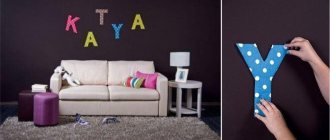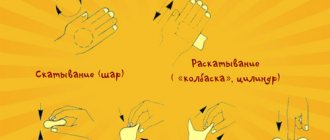A daily routine is a set sequence of sleep, walks, games, developmental activities, nutrition, and hygiene. When a child begins attending kindergarten, the question arises of preparing him for classes at school: the child needs to develop skills in using a pen and pencil, as well as perseverance, the ability to concentrate, and carry out the tasks of the teacher (educator, and then teacher). A preschooler’s well-established daily routine helps with this – and more.
What should the regime be?
The importance of a daily routine for preschoolers is difficult to overestimate. It has been established that children who follow a daily routine are more balanced and productive. They gradually develop certain biorhythms, as well as a system of conditioned reflexes. All this helps the small organism physiologically switch between one or another type of activity, prepare in a timely manner for each stage: eating, walking, exercising, resting.
In the absence of a stable regime, the nervous system of a preschooler experiences great stress: the baby quickly becomes overtired or overexcited, and accumulated fatigue prevents proper sleep. Children with developmental disabilities feel this especially acutely, since their body’s reserves are often reduced.
What does a harmonious daily routine for a preschooler look like? It includes the following periods.
- Night sleep. For younger preschoolers it should last 13–14 hours a day, for older ones – about an hour less. Babies should be put to bed at night between 20 and 21 hours.
- Daytime sleep. Before 4 years of age, its duration is about 2 hours, after - about 1.5 hours.
- Meals. There should be at least 4 of them, every 3.5–4 hours.
- Stay awake for 6–6.5 hours.
Game - travel "Daily routine - we are friends" presentation on the topic
Slide 1
“To the daily routine - we are friends” game - travel Teacher of the SBO “Civilian Special (Correctional) General Education School - Boarding School No. 2” Mikhailova Inna Valentinovna
Slide 2
Goal: Reinforce knowledge about the importance of following a daily routine
Slide 3
Today we are holding a game - a journey “Daily routine - we are friends.” The correct daily routine is a life routine that protects against overwork, ensures good performance, improves health and at the same time allows you to successfully complete all tasks and have a good rest.
Slide 4
Station “The Morning Begins” Find the correct answer In the morning after sleep: sit down to have breakfast; do exercises; review your homework; wash the dishes; clean your school uniform
Slide 5
Station “Healthy eating - great mood” Choose what you can eat for breakfast?
Slide 6
Station “Rest” Horizontally: 1. The girl is sitting in a dungeon, and her scythe is on the street. 2. A vegetable, which in the Russian fairy tale “They pull and pull,” but cannot be pulled. 3. Doesn't like light, is afraid of the cold and wears a uniform. 8. Ripe, juicy... 9. Both sour and red Grew in the swamp. 11. This shrub is a “piggy bank” of vitamins. Vertical: 4. One hundred clothes and all without fasteners. 5. Legume plant. 6. Red vegetable. 7. If onions cure seven diseases, then this vegetable cures 99 diseases. 10. A ball grew on a green leg on the path. The breeze rustled and scattered this ball. Crossword puzzle "Vitamin family".
Slide 7
Answer Carrot a p a u s g t o p c k a r t a t o f e l o m s h i n d a p l e b l o c c l u c k v a d r u v a n ch sh i p o v n i k k
Slide 8
Game “Memorykino” Remember the vegetables in the poem We dug up potatoes, collected cucumbers from the ridge, pulled out all the carrots, deftly cut the cabbage and brought it to you as a gift in a basket from the ground.
Slide 9
Game “Continue the proverbs” Cabbage soup and porridge -…. Take care of your dress again, and your health... If you are sick, get treatment, but if you are healthy, you will be healthy - that's all... Smoking is good for your health.... Garlic and onions from... Words for reference: beware, you will get it, our food, from a young age, seven ailments, harm.
Slide 10
What's in the black box? This box contains a vegetable that has a strong smell and pungent taste. This valuable plant contains many vitamins and nutrients. In addition, it contains medicinal substances and is used in medicine.
Slide 11
Doing Your Homework Station Remember what you need to know about doing your homework. How many hours should you do your homework? 1 hour; 1,5 hour; Where to start doing your homework? from a light object; from difficult subjects; Do you need to take a break between preparing different lessons?
Slide 12
Station “Active Recreation” Choose the correct answers Active recreation is playing in the fresh air, reading books, skiing, skating, good sleep, computer games
Slide 13
Well done!
Slide 14
Summing up Always get up in a good mood. And to have a good mood, go to bed on time and with the lessons learned. Don't start homework right after school. Eat lunch, relax, play ball, do something around the house. Every day, devote time to sports after preparing your lessons. Always ventilate the room you are in. In a stuffy room you work worse and rest worse.
What does it mean to be awake?
This is not just a period when the child does not sleep. The wakefulness of a preschooler attending kindergarten is filled with a variety of useful activities:
- walks (in winter - about 3 hours, in summer - up to 6);
- study of the surrounding world;
- physical activity;
- speech development classes;
- work activity;
- classes or games on mental development (mathematics, learning to read, logic, development of attention, memory), moral education;
- creative activity;
- music lessons;
- teaching writing skills.
Such activities directly contribute to the development of qualities that a child will definitely need at school: initiative, perseverance, concentration, activity, motor skills, curiosity, and the ability to withstand a certain amount of time at work.
For younger schoolchildren in kindergartens, up to 10 different classes are provided per week, for older students - up to 14.
At the same time, activities aimed at teaching children are planned between 9 and 12 o'clock in the morning, between 16 and 18 o'clock in the evening. This is due to the level of performance and activity of preschoolers during the day. The most unfavorable period for learning is between 12 and 16 hours.
When drawing up a lesson schedule, the degree of difficulty is also taken into account. The more complex ones include mathematics, speech development, studying the world around us, while the simpler ones include drawing, modeling, appliqué, and design. The most complex ones are planned in the first half of the week, when children are more productive, and the simple ones - in the second half. Static activities are combined with dynamic ones (walking, gymnastics, music classes).
Educational activities are structured taking into account age capabilities. The duration of one lesson for younger preschoolers is about 15 minutes (there should be no more than 2 per day), for older ones - up to half an hour (2-3 developmental classes are held daily).
Don't overdo the sections or circles. For a kindergarten-preschooler, 1–2 clubs are enough. He should have time to rest and communicate with his family. Excessive developmental workload will lead to overstrain of the nervous system, sleep disturbances, and a decrease in the body's immune defense.
Daily routine and its importance for preschoolers
3. The organization of the daily routine is carried out taking into account the warm and cold periods of the year
WHAT IS THE DAY SCHEDULE IN KINDERGARTEN?
The importance of a child's daily routine
A correct regimen that corresponds to the child’s age-related capabilities improves health, ensures efficiency, successful implementation of various activities, and protects against overwork. In a child accustomed to a strict routine, the need for food, sleep, and rest occurs at certain intervals and is accompanied by rhythmic changes in the activity of all internal organs. The body, as it were, adjusts in advance to the upcoming activity, so it is carried out quite efficiently, without unnecessary waste of nervous energy and does not cause pronounced fatigue. Good performance during the day is ensured by a variety of activities and their alternation. From a physiological point of view, this is explained by the ability of the cerebral cortex to simultaneously work and rest. At each individual moment, not its entire surface is working, but individual areas, namely those that are in charge of this activity (the field of optimal excitability). The remaining areas of the cortex are at rest at this time. All physiological processes in the body, having their own biological rhythm, obey a single daily rhythm - the change of day and night. During the day, the child’s activity and performance are not the same. Their rise is noted from 8 to 12 hours and from 16 to 18 hours, and the period of minimum performance occurs at 14-16 hours. It is no coincidence, therefore, that activities that cause pronounced fatigue in children are planned in the first half of the day, during hours of optimal performance. The duration of periods of wakefulness in preschoolers is limited to 5-6 hours. This implies the need to alternate wakefulness and sleep.
HYGIENIC ASPECTS OF ORGANIZING THE DAY REGIME FOR PRESCHOOL CHILDREN
The concept of “daily routine” includes the duration, organization and distribution during the day of all types of activities, rest and meals. A rationally constructed and organized regime is an important factor in ensuring timely and harmonious physical and mental development of children and adolescents, an optimal level of performance, and also prevents the development of fatigue and increases the overall resistance of the body.
In connection with the beginning of early education and its intensification, deviations are noted in the daily routine of preschoolers, forming functional and other health disorders.
The main hygienic principle of constructing a rational daily routine is its strict implementation, the inadmissibility of frequent changes, and the gradual transition to a new regime of education and training.
Approximate schedule
The daily routine of preschool children who go to kindergarten is subject to the work program of a particular institution. It might look something like this:
- 7:00 – 8:00 – getting up, exercising, morning hygiene, going to kindergarten;
- 8:00 – 8:30 - breakfast;
- 8:40 – 10:00 – gaming and educational activities;
- 10:10 – 12:10 – walk, games;
- 12:30 – 13:10 - dinner;
- 13:10 – 13:30 – preparation for daytime sleep;
- 13:30 – 15:30 - dream;
- 15:30 – 16:00 – awakening, quiet games;
- 16:00 – 16:30 – afternoon snack;
- 16:30 – 17:30 – educational activities, games;
- 17:30 – 19:00 – a walk, the way home, playing outside;
- 19:00 – 19:30 - dinner;
- 19:30 – 20:30 – quiet games;
- 20:30 – 21:00 – bathing, preparation for bed;
- 21:00 – 7:00 - night sleep.
The child spends the evening at home. Therefore, it is important for parents to remember that the child’s activities before bed should not be too noisy or active. You can read books, draw, play with blocks or construction sets, and discuss the past day.
If your preschooler attends kindergarten, try to adhere to the routine established at the preschool on weekends. This will allow the child to be more productive in activities by the beginning of the next week. If your child does not yet attend preschool, but you plan to send him there in the foreseeable future, find out the schedule of a particular kindergarten and teach your child to it while he is at home. Then it will be much easier for him to adapt to life in a children's group.
Approximate daily routine in a preschool institution
| Time | Activity |
| 7.00- 8.00 | Reception of children. |
| 8.00- 8.20 | Morning exercises. |
| 8.25- 8.55 | Preparing for breakfast. Breakfast |
| 8.55- 10.00 | Preparation for classes. Organized focus: speech and physical development, artistic and aesthetic, cognitive, including FEMP (formation of elementary mathematical classes). Social, communicative and musical. |
| 10.00- 10.15 | Lunch. |
| 10.15- 10.45 | Independent studies. |
| 10.45- 12.05 | Preparing for a walk. Walk. |
| 12.15- 12.55 | Preparing for lunch. Eating. |
| 13.00-15.00 | Daytime sleep. |
| 15.00- 15.15 | Gradual rise. Gymnastics after sleep. |
| 15.20-15.55 | Afternoon snack. |
| 16.00-17.00 | Independent activity of children and adults. Preparing for an evening walk. |
| 17.00- 18.00 | An evening walk. |
| 18.00- 19.00 | Dinner. Independent activity. Going home. |
Have you ever wondered why preschoolers’ day is structured this way? Why are the first half of the training sessions provided for by the program in which the child is developing? Why is there such a time interval between meals?
Scientists in the field of childhood development have observed and found that it is during this period of time that food is better absorbed in the child’s body, releasing more useful substances. This has a beneficial effect on both digestion, without overloading the stomach with snacks, and on the development of the child’s brain activity.
The hourly period from 9.00 to 12.00 is a “cheerful” time for assimilation of information. In the first half of the day, children's brains do not sleep - they work, absorb new knowledge. With irregular intellectual stress, the nervous system and psychological state are in a relaxed state, which leads to low academic performance, passive physical development, and this is a consequence of a decrease in the body’s functioning, including against viral diseases. Children who strictly follow a daily routine, are organized, independent, inquisitive and intellectually developed.
In combination, daily routine + mental stress + physical focus = strengthening the nervous system, immunity, general development.
If a child often stays at home or does not attend kindergarten, it is recommended to carefully approach his all-round development. It is necessary to divide the day into energetic and passive parts according to age and psychological characteristics.
Home mode
What should you do if, for some reason, your child does not and will not attend kindergarten? Sticking to the same regime is a definite thing. True, with some nuances. The first of them is that the baby can be allowed to wake up a little later (since there will be no time needed to travel to the kindergarten). Secondly, you can also put the baby to bed later.
Another subtlety is that parents will have to organize educational activities for their child themselves. To do this, it is advisable to familiarize yourself with the requirements for preparing a child in the school that the child will attend in the future, and try to prepare the child in accordance with them. Of course, you can also attract specialists to help (for example, enroll your child in an early development group or with a teacher who will take on the role of a kind of tutor). But if you have confidence in your own abilities, then it is better if the parents teach the preschooler. This way they will have the opportunity to once again (which is not at all superfluous!) demonstrate to him their love, interest in his development and pride in his first achievements.
You will have to do the same things as in the garden: teach writing, reading, drawing, sculpting, dancing, teaching basic mathematical concepts, developing speech, studying nature, playing, developing the child physically (independently or in a sports section), and be sure to accustom him to work. Among other things, mothers are entirely responsible for their child’s diet.
Didactic game “My Day”
Completed by: teacher Postanogova E.P.
Didactic game “My Day”
(for children 4-6 years old)
Introductory part.
The correct daily routine is a routine that protects against overwork, ensures good performance, improves health and at the same time allows you to successfully complete all tasks and have a good rest.
The formation of ideas about time among preschoolers in kindergarten begins with the second youngest group. At this age, they form an idea of the time of day: morning, afternoon, evening, night.
The formation of time concepts is based on clarity, so a didactic game was developed aimed at developing a sense of time and time of day.
This game can be used as part of a GCD, in joint and independent activities.
Target:
formation of children's understanding of the daily routine and the need to adhere to routine moments to preserve and strengthen their own health.
Tasks:
Educational:
- exercise children in distinguishing parts of the day based on objective signs;
-fix the sequence of parts of the day, the concept of “day”;
- to accustom children to follow a daily routine, to consolidate activities carried out at different times of the day;
-activate and enrich children's vocabulary.
Educational:
-develop visual perception, voluntary attention, imagination;
-develop the ability to show these movements using facial expressions and gestures and guess by showing them.
Educational:
-develop the ability to listen to each other;
- to cultivate primary strong-willed character traits (the ability not to be distracted from the task at hand, to bring it to completion).
Material:
manufactured cardboard houses; plot pictures depicting children’s actions in different parts of the day, riddles.
Rules of the game:
The cards must be arranged sequentially, in accordance with the regime (from getting up in the morning to going to bed in the evening).
Progress of the game:
Option 1:
"Guess the riddles"
On the table there are pictures depicting the actions of children at different times of the day, houses representing parts of the day. The teacher invites the children to guess riddles.
1. The sun woke up in the sky,
He looked at us at the window.
The cockerel cries wisely,
Announces: “It’s...Morning!”
Children guess, select pictures and lay them out at the “Morning” house, explaining the sequence of the activity that corresponds to the time of day.
2. The sun is high in the sky,
And the night is far away,
Short trees shade.
What time of day is it? (Day)
Children guess, select pictures and lay them out at the “Day” house, explaining the sequence of the activity that corresponds to the time of day.
We teach to study
This is where the biggest difficulty awaits parents. Children are used to it and love to play. But learning for them is something incomprehensible in principle, and therefore boring and unnecessary. In a group of peers, children study together, which is an additional incentive. In addition, experienced teachers know how to find an approach to children and interest them in the upcoming work. But how can you explain to your child at home what the point is in learning?
Most of us will start to scare the child with the fact that “ignoramuses, when they grow up, work as janitors or loaders.” To a child, such a prospect seems very distant and vague. And besides the fact that he will devalue the work of a loader or janitor for himself, such suggestions will be of no use.
The second option, and also not the best, is bribery: if you read it, you will receive a toy, sweets, or play on the computer. This approach will only create commodity-money relations between the preschooler and adults. The baby will not be interested in the result of his work. It will be important for him to quickly finish what is preventing him from having fun and get the desired reward.
How can you help your child accept the need for classes?
- Appreciate all your child’s achievements: both existing and upcoming ones. Teach it to teach, and not to satisfy your unfulfilled ambitions.
- Don’t cram as much knowledge into it as no one knows everything. First of all, take into account what is interesting to the child himself, comparing with the requirements for readiness for school.
- Do not compare your own child with others who are more successful - this will lower the child’s self-esteem and discourage the desire to learn. Compare with how he himself is progressing.
- You cannot buy the efforts of a preschooler with some benefits, just as you cannot force him to study as a punishment for wrongdoing.
- You cannot punish for mistakes or inability. Parents are helpers, mentors and advisers.
- Always praise your child for any successes, support him, show your pride in his successes and faith in his strength.
- Difficult tasks cannot be excluded. They are most useful for the development of the baby. Just show him that you are always ready to help.
- Stick to the established time of classes, observe age standards for their number per day and duration.
- Diversify your lessons with fun physical education breaks so that your child doesn’t sit too long and get tired.
The daily routine of a preschooler is aimed, first of all, at his development and preparation for learning. Therefore, it is so important to draw it up correctly and strictly adhere to it. This habit will help the child throughout his life. It will make him more confident, organized and productive.



